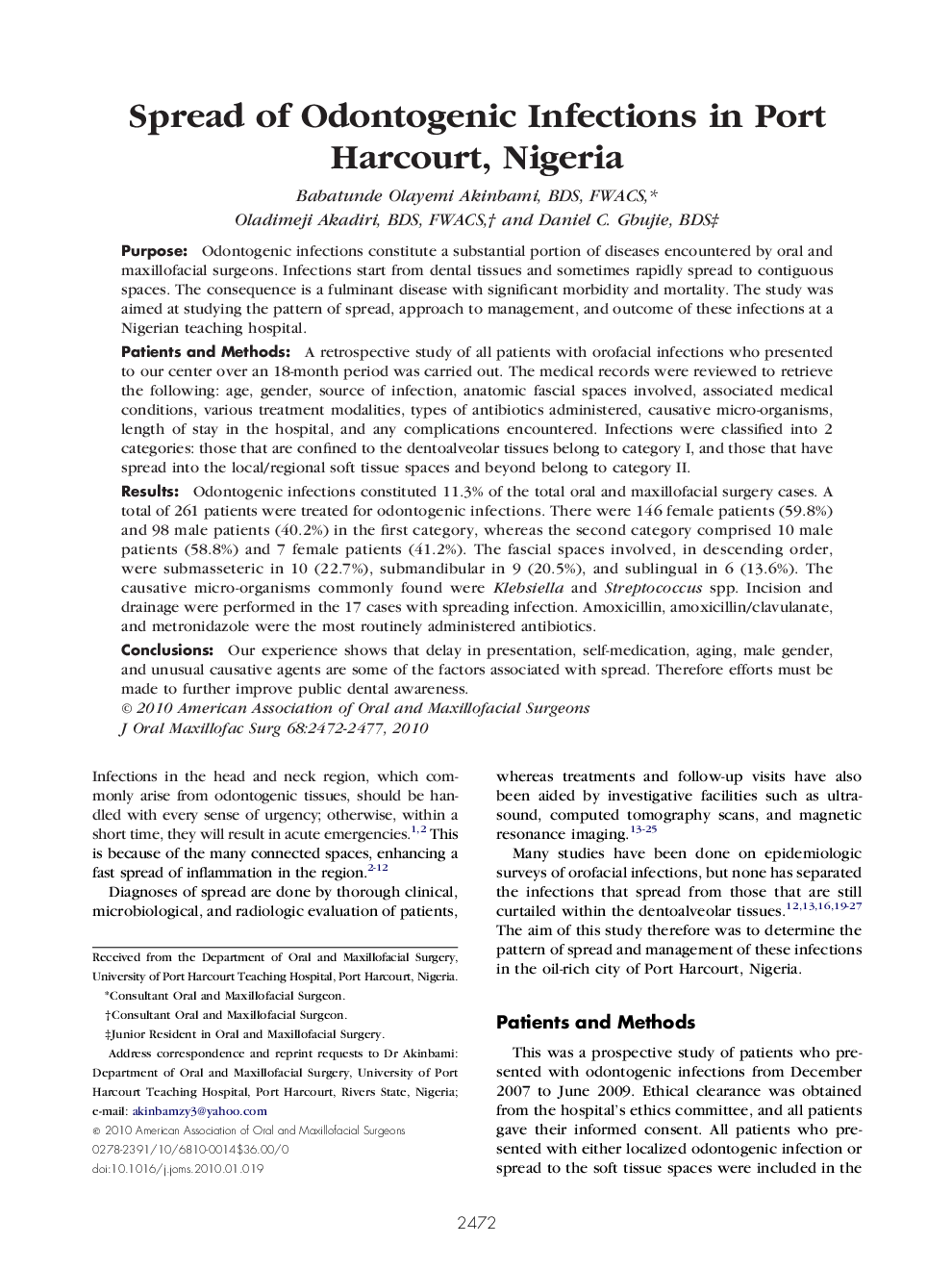| Article ID | Journal | Published Year | Pages | File Type |
|---|---|---|---|---|
| 3158969 | Journal of Oral and Maxillofacial Surgery | 2010 | 6 Pages |
PurposeOdontogenic infections constitute a substantial portion of diseases encountered by oral and maxillofacial surgeons. Infections start from dental tissues and sometimes rapidly spread to contiguous spaces. The consequence is a fulminant disease with significant morbidity and mortality. The study was aimed at studying the pattern of spread, approach to management, and outcome of these infections at a Nigerian teaching hospital.Patients and MethodsA retrospective study of all patients with orofacial infections who presented to our center over an 18-month period was carried out. The medical records were reviewed to retrieve the following: age, gender, source of infection, anatomic fascial spaces involved, associated medical conditions, various treatment modalities, types of antibiotics administered, causative micro-organisms, length of stay in the hospital, and any complications encountered. Infections were classified into 2 categories: those that are confined to the dentoalveolar tissues belong to category I, and those that have spread into the local/regional soft tissue spaces and beyond belong to category II.ResultsOdontogenic infections constituted 11.3% of the total oral and maxillofacial surgery cases. A total of 261 patients were treated for odontogenic infections. There were 146 female patients (59.8%) and 98 male patients (40.2%) in the first category, whereas the second category comprised 10 male patients (58.8%) and 7 female patients (41.2%). The fascial spaces involved, in descending order, were submasseteric in 10 (22.7%), submandibular in 9 (20.5%), and sublingual in 6 (13.6%). The causative micro-organisms commonly found were Klebsiella and Streptococcus spp. Incision and drainage were performed in the 17 cases with spreading infection. Amoxicillin, amoxicillin/clavulanate, and metronidazole were the most routinely administered antibiotics.ConclusionsOur experience shows that delay in presentation, self-medication, aging, male gender, and unusual causative agents are some of the factors associated with spread. Therefore efforts must be made to further improve public dental awareness.
